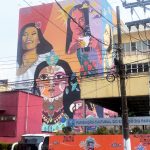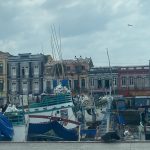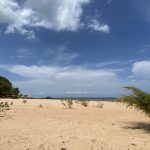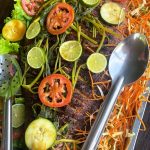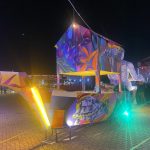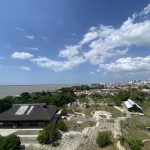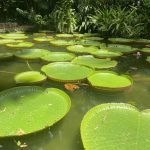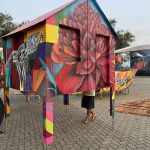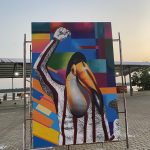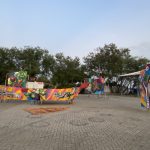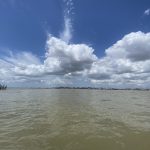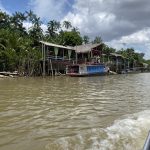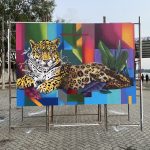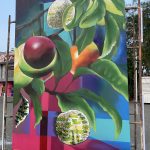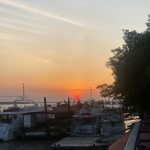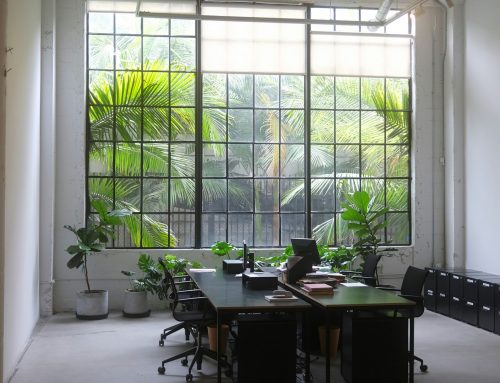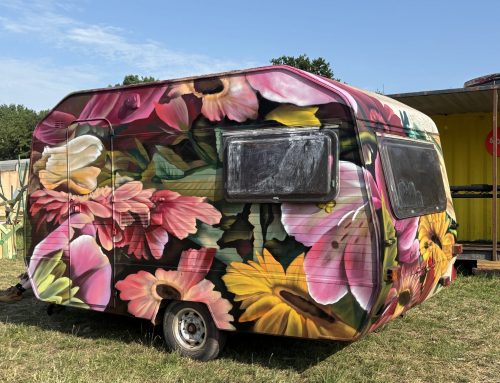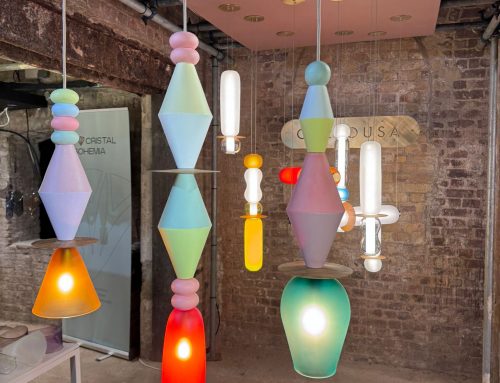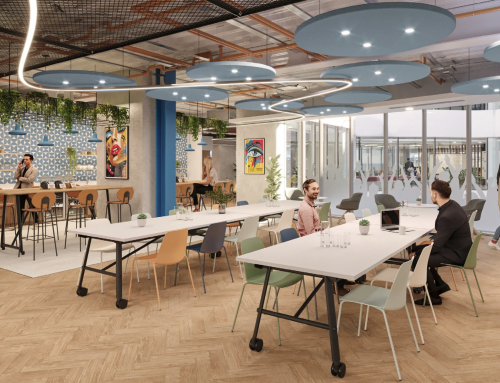This week in the Wylde blog we’re discovering what on earth one of our team members has been up to in the Amazon! In-house graphic designer, social media and blog writer come international graffiti artist has been on the other side of the world, painting for a particularly interesting and topical project.
Harriet headed to Belém in the northern state of Pará in Brazil at the beginning of the month to take part in a British Council project at Se Rasgum. The Se Rasgum Festival is a vibrant celebration of music, art, and culture, bringing together diverse musical genres and fostering a sense of community in the heart of the Brazilian Amazon. The event is noteworthy for its proactive stance on the climate crisis, incorporating eco-friendly practices and promoting environmental awareness. With a commitment to sustainability, the festival puts emphasis on responsible waste management, renewable energy sources, and initiatives that encourage attendees to engage in eco-conscious behaviours, creating an intersection of cultural celebration and environmental advocacy.
So what does this have to do with graffiti?! Harriet teamed up with a popular Brazilian graffiti artist duo from the Parintins area of the Amazon to create a collaborative art installation for the festival that depicts the immediate impact the pollution, waste and devastation is having on the region. The duo ‘Curumiz’ created a huge sculpture of a tribesman in a traditional Amazonian houseboat and Harriet illustrated some of the wildlife and creatures that are at risk of extinction if the course of action isn’t changed.
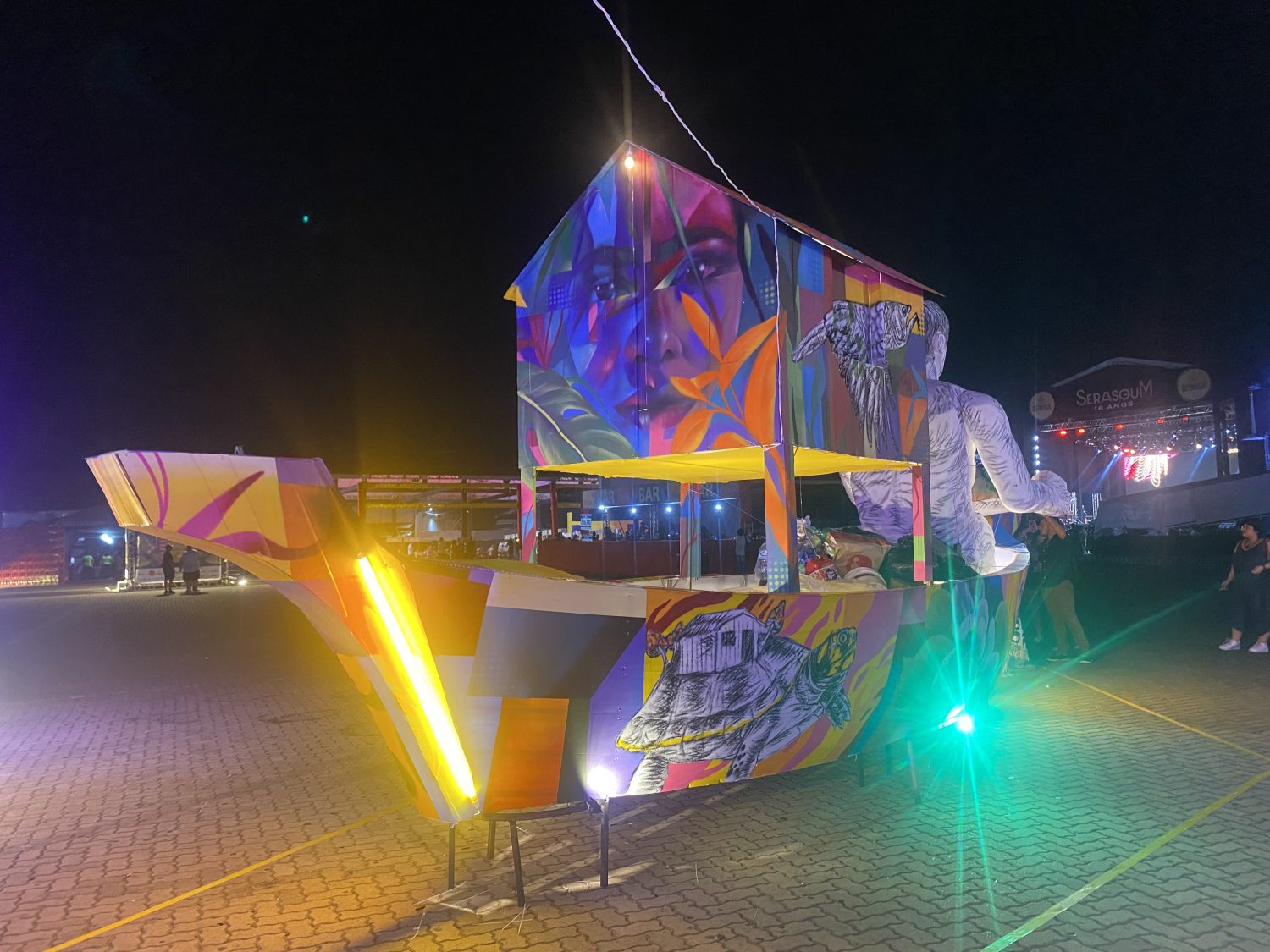
The impacts of climate change in the Amazon region of Brazil are increasingly evident, painting a distressing picture of environmental degradation. Rising temperatures and shifting precipitation patterns have instigated more frequent and severe droughts, placing immense stress on the delicate ecosystems that make the Amazon a global biodiversity hotspot. The iconic rainforest, often referred to as the “lungs of the Earth,” is experiencing heightened rates of deforestation and wildfires, exacerbating the release of carbon dioxide into the atmosphere. The altered climate conditions have also led to disruptions in the natural life cycles of numerous species, from plants to animals, with potential cascading effects throughout the food web. Indigenous communities, intimately connected to the Amazon’s ecosystems, face heightened challenges as their traditional ways of life are disrupted by changing weather patterns, impacting agriculture, water resources, and overall livelihoods.
There is a saying in Belém; “we will meet after the rain” which relates to reconvening after the daily showers which happened around midday (it is a rainforest after all, right?) which up until recently, held true – but frighteningly, the weather patterns are changing so quickly that the rain is no longer a daily occurrence – sometimes barely every week – which shows how rapidly the environment is degrading, in real time. The urgency to address climate change and protect the Amazon has never been more critical, as the consequences extend far beyond the borders of Brazil, affecting the global climate and biodiversity.
But to bring some of the Brazilian sunshine and heat to the chilly UK, here’s some of her snaps!

